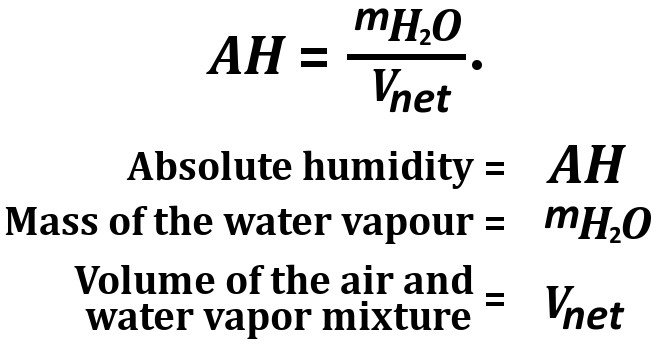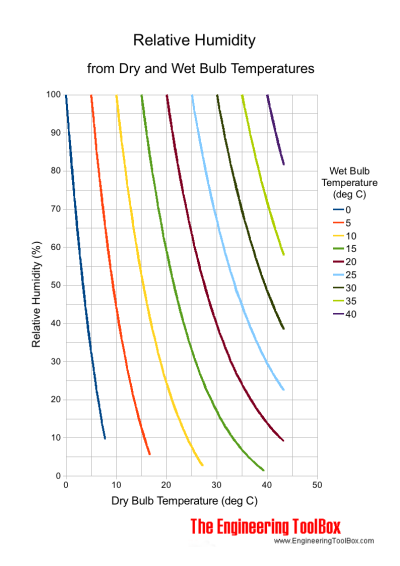

The dew point (dew point temperature) defines the temperature to which the air must be cooled for the water vapor to begin condensing. The dew point (dew point temperature) defines the temperature to which the air must be cooled so that the water vapor begins to condense. 100% means that no more water vapor can be absorbed in the air. The relative humidity indicates the ratio of water vapor saturation in relation to the highest possible saturation. Humidity does not count liquid water (e.g. It is often referred to as absolute humidity and is typically read as mass per volume, e.g.

For air near room temperature and atmospheric pressure, the water vapour enhancement factor affects the result by approximately 0.5 % of value.The humidity describes the amount of water vapor in the air. The accuracy of these calculations depends slightly on the pressure and temperature of the gas concerned. The uncertainties associated with these equations are: (Formulae due to Sonntag, 1990, updated from formulae given by Wexler, 19.) This is a more accurate but complex alternative formula for vapour pressure (in pascals) from dew point (in kelvin) for water: Ln e i(t) = ln 611.2 + (22.46 t)/(272.62+ t) (Equation 3)įor the range -65 ☌ to +0.01 ☌, values given by this equation have an uncertainty of < ☑.0 % of value, at the 95% confidence level. Ln e w(t) = ln 611.2 + (17.62 t)/(243.12+ t) (Equation 2)įor information, 100 Pa = 1 millibar (mbar)įor the range -45 ☌ to +60 ☌, values given by this equation have an uncertainty of < ☐.6 % of value, at the 95% confidence level. Vapour pressure can be calculated using the Magnus formula. This states that at a temperature t (in ☌), the saturation vapour pressure e w(t), in pascals (Pa), over liquid water, is Use Equation 2 or 3 below (or Equation 4 or 5) to calculate dew or frost point temperature from vapour pressure (requires iteration if using Equations 4 or 5).Use Equation 1 to calculate water vapour pressure from saturation vapour pressure and known relative humidity.

Use Equation 2 or 3 below (or Equation 4 or 5 for greater accuracy) to find the saturation vapour pressure from ambient temperature.To convert from relative humidity and ambient temperature to dew point Use these values of vapour pressure in Equation 1 to find relative humidity.Convert dew-point temperature and ambient temperature into water vapour pressures using Equation 2 or 3 below (or Equation 4 or 5 for greater accuracy).To convert from dew point or frost point to relative humidity Conversions between these two parameters must be carried out via the intermediate step of evaluating both the actual vapour pressure of water and the saturation vapour pressure at the prevailing temperature. Unfortunately, there is no simple, direct formula for converting between dew point and relative humidity. Relative humidity (in %) = e/ e s × 100 (Equation 1) The relative humidity is the ratio of the amount of water vapour, e, in the air to the amount of water vapour, e s, that would be in the air if saturated at the same temperature and pressure. Where the condensate is ice, this is known as the frost point. The dew point, or dew-point temperature, is the temperature at which dew, or condensation, forms as you cool a gas.


 0 kommentar(er)
0 kommentar(er)
